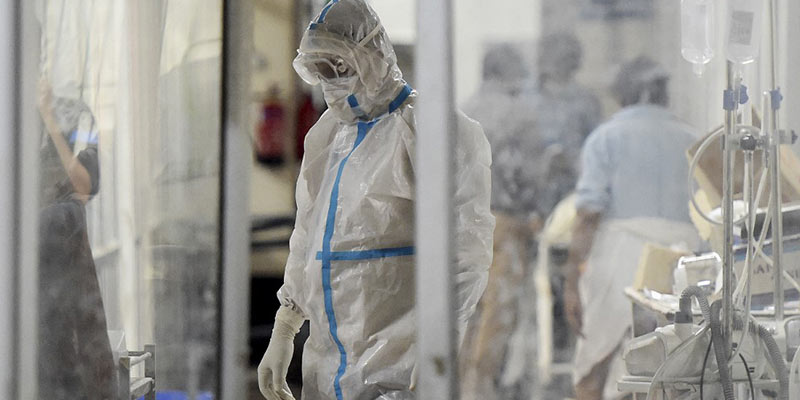- India
- May 11
Explainer / Mucormycosis or ‘black fungus’
• Cases of mucormycosis, a fungal infection, are rising among COVID-19 survivors in many states, causing blindness or serious illness.
• The Gujarat government has started setting up separate wards in hospitals for such patients and has procured 5,000 vials of a medicine used in its treatment.
• The Maharashtra government has announced that patients of mucormycosis will be treated for free under the state’s flagship medical insurance scheme — Mahatma Jyotiba Phule Jan Arogya Yojana.
• Cases of mucormycosis or ‘black fungus’ have also been reported in Delhi and Odisha.
• Niti Aayog member (health) V.K. Paul said mucormycosis is being found in COVID-19 patients and largely in cases of those who are diabetic. He said there is no big outbreak and the government is monitoring it.
• The Indian Council of Medical Research (ICMR) released an advisory for screening and management of the disease.
What is mucormycosis?
• Mucormycosis (sometimes called zygomycosis) is a serious but rare fungal infection caused by a group of molds called mucormycetes. These fungi live throughout the environment, particularly in soil and in decaying organic matter, such as leaves, compost piles, or rotten wood.
• People get mucormycosis by coming in contact with the fungal spores in the environment. For example, the lung or sinus forms of the infection can occur after someone breathes in spores.
• These forms of mucormycosis usually occur in people who have health problems or take medicines that lower the body’s ability to fight germs and sickness.
• Sinuses or lungs of such individuals get affected after fungal spores are inhaled from the air.
• Mucormycosis can also develop on the skin after the fungus enters the skin through a cut, scrape, burn, or other type of skin trauma.
• The fungal infection being found in COVID-19 patients with uncontrolled diabetes and prolonged intensive care unit (ICU) stay, may turn fatal if uncared for, ICMR said.
Symptoms
Warning symptoms include:
• Pain and redness around eyes and nose
• Fever
• Headache
• Coughing
• Shortness of breath
• Bloody vomits
• Altered mental status.
In COVID-19 patients with diabetes and immuno-suppressed individuals, one must suspect of mucormycosis if there is:
• Sinusitis — nasal blockade or congestion, nasal discharge (blackish/bloody), local pain on the cheek bone.
• One-side facial pain or numbness or swelling.
• Blackish discoloration over the bridge of the nose or palate.
• Toothache.
• Blurred or double vision with pain, skin lesion, thrombosis & necrosis (eschar).
• Chest pain and worsening respiratory symptoms.
Major risk factors for this disease include uncontrolled diabetes mellitus, immunosuppression by steroids, prolonged ICU stay, malignancy and voriconazole therapy.
To prevent the disease
• Blood glucose level should be monitored post-COVID discharge and also in diabetic patients.
• Steroids should be used judiciously in correct timing, dose and duration.
• Clean sterile water should be used in humidifiers during oxygen therapy.
• Antibiotics and antifungal medicines should be used correctly.
Medical treatment
It includes:
• Installing peripherally inserted central catheter.
• Maintaining adequate systemic hydration.
• Infusion of normal saline intravenously before Amphotericin B infusion.
• Anti-fungal therapy for at least six weeks besides monitoring the patient clinically with radio imaging for response and to detect disease progression.
Manorama Yearbook app is now available on Google Play Store and iOS App Store

